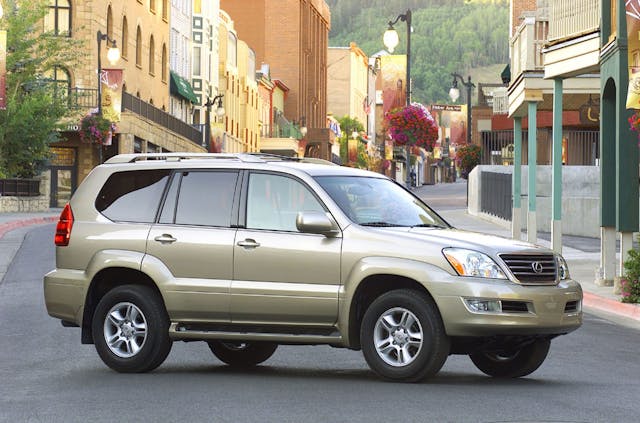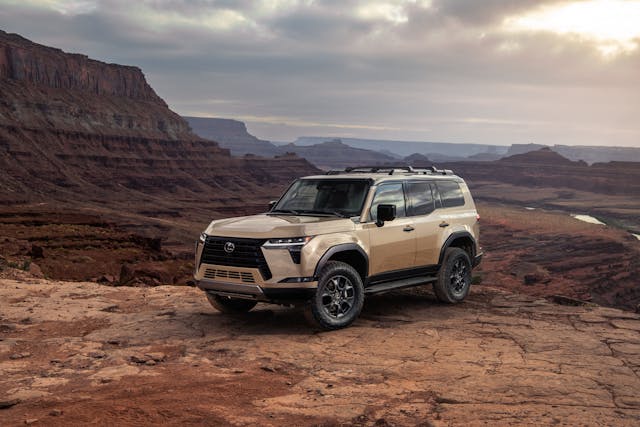Media | Articles
How the First-Generation Lexus GX Blazed a Trail for the Current Model
It’s always fun to look back a decade or two and survey the automotive industry landscape with the added perspective afforded by the passing of time. Often, these exercises remind us that despite whatever today’s CEOs are spouting off at their keynote speeches in Davos, the challenges facing the auto industry don’t look all that different through the years.

Case in point: this Retro Review from Motorweek, discussing the then-brand-new Lexus GX 470. At the film’s opening, charismatic host John Davis drops the famous Field of Dreams line, “If you build it, they will come” as he talks about the situation facing the GX upon its debut. Faced with an unprecedented array of choices in the luxury SUV market, would Lexus’ decision to toss another hat in the ring prove intelligent or cannibalistic?
That question sounds familiar—the 2024 GX 550 faces similar inquiries today. With the addition of the TX unibody crossover and the company’s decision to mount the GX and the LX on the same body-on-frame TNGA-F platform, it initially seemed to us that three three-row luxury offerings from one automaker might be too much. Having now driven the GX 550, the LX 600, and the TX350, we can say that there are enough differences between the three to allow each one to carve out its own market niche.
Back to the Retro Review in question. Aside from the market conditions, it’s also enjoyable to simply look at how far a single model such as the GX has come in its lifetime. In 2003, the GX’s 4.7-liter V-8 made 235 hp and 320 lb-t of torque. Today’s model manages 114 more ponies and 159 more lb-ft from a twin-turbo V-6 with just 3.4 liters of displacement.
Even more interesting to me is the discussion around the older model’s off-road abilities. Davis talks about the full-time four-wheel-drive system and how it’s plenty capable off-road as you see the rear end of the GX 470 bounce over some rocky terrain. But note those fixed running boards—in the first and second generations of the GX, Lexus still made concessions to on-road comfort. The new generation, particularly with the Overtrail and Overtrail+ models, can finally place off-road capability at the forefront of its selling proposition. (Even if, like the older ones, most of them will probably see road-going duties for most of their lifespan.)

At the end of the short review, Davis notes that Lexus was hoping to crest the 20,000 unit annual sales mark. A quick Google search shows that the 2003 model year covered that objective handily, moving over 30,000 examples of the luxo-ute. Beating estimates by 50 percent was a serious win, and it proved that Lexus had a compelling formula in its hands.
The new model, by retaining its body-on-frame construction, would appear even more outdated in today’s market than its predecessor did over 20 years ago. Car-like SUVs were already gaining traction back in the early 2000s, but today, they’re a dime a dozen. But with the uptick in interest around off-roading and the clear advantages that this chassis design offers, the new GX might be positioned even better today. Lexus hopes to clear 33,000 units in the first full year of sales, and despite tougher economic headwinds, we think that number is plenty doable.
Marketplace
Buy and sell classics with confidence
***
Check out the Hagerty Media homepage so you don’t miss a single story, or better yet, bookmark it. To get our best stories delivered right to your inbox, subscribe to our newsletters.













